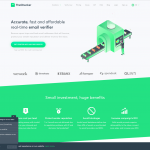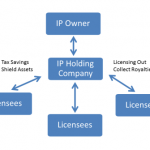Open Banking for Dummies
Open banking is coming of age incredibly fast. It started with the Revised Payment Services Directive (PSD2) regulation in the European Union and the European Economic Area. Although PSD2 was passed in 2015, the majority of PSD2 rules took effect in 2018.

Nowadays, open banking is adopted in Europe, Australia, Asia, the Americas and other world regions.
What is open banking?
In plain English, open banking enables sharing of personal financial information in a safe and standardized way. It creates a synergetic environment for companies to deliver financial services more efficiently.
Traditionally, customers have to establish and maintain separate relationships with each financial organization. The customer has to create different profiles for each institution and provide their login information, passwords and additional security details. This practice is not only inconvenient but also less secure.
Instead, open banking allows banks to provide financial services via application programming interfaces (APIs). This technology is subject to the customer’s explicit consent and ensures a secure and effective way to expose financial information. Open banking complies with strict information security regulations and is vigilantly supervised by special government agencies.
Benefits of open banking to customers
The concept of open banking was designed to encourage more competition and innovation in financial services. A competitive and constantly renewing environment should ensure that customers would gain new and better financial products.
For example, customers could connect their bank accounts to an open banking app that would carefully and securely analyze relevant financial data and provide recommendations adapted explicitly to current individual needs. Such advice will grant access to the best financial services available in the market and help to save money.
Is open banking safe?
Data security is of crucial importance in open banking. This innovative banking system allows obtaining and withdrawing customers’ consent to use their financial data.
Service providers must be clear about the duration and management of customer’s consents. The customer should be able to revoke any given consent at any time. All providers are required to follow strict data protection rules. They must explicitly inform customers about the data they will access, how they will use it and ensure its protection.
Open banking provides customers with complete control of their financial data and ensures Strong Customer Authentication (SCA). SCA is a new security standard of the PSD2. To reach the highest level of protection possible, service providers must perform additional checks to confirm customers’ identities.
Read more about “Open Banking Explained” in Nordigen.com website.








![Setting up Your Work From Home Space [Infographic]](https://technofaq.org/wp-content/uploads/2021/03/WFH_Infographic.jpg)




